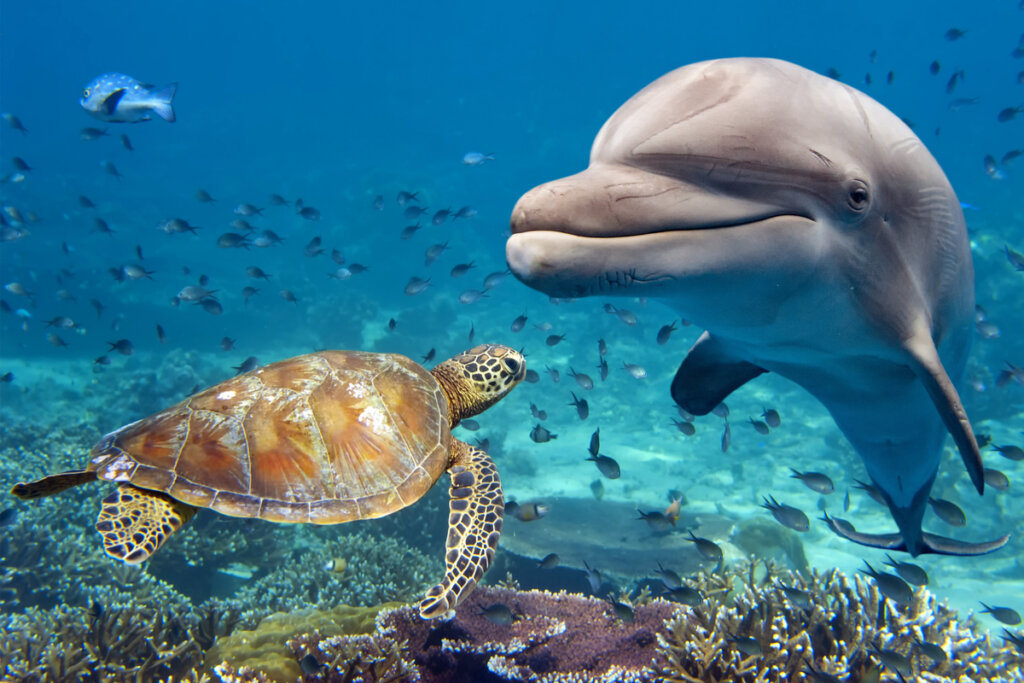The Cambridge Declaration: Animals Are Conscious Beings

The Cambridge Declaration was a milestone in science but, above all, a turning point in the relationship between man and nature. Indeed, several of the most prestigious scientists in the world came together to launch a definitive conclusion: animals are conscious beings.
This manifesto was launched after several conferences in which the subject of consciousness in humans and animals was discussed. The Cambridge Declaration was developed by an international group of neuroscientists, neuropharmacologists, neurophysiologists, neuroanatomists, and computational neuroscientists, in the presence of Stephen Hawking.
However, what does the statement that animals are conscious beings signify? In a general way, it means that they perceive their own existence and that of the world around them. Furthermore, they notice the difference between their being and that of others, and between their individual existence and that of others.
Let’s see what other claims were made in the Cambridge Declaration.
“We came to a consensus that now was perhaps the time to make a statement for the public… It might be obvious to everybody in this room that animals have consciousness; it is not obvious to the rest of the world.”
-Philip Low-

The Cambridge Declaration
The Cambridge Declaration was made on July 7, 2012, at the University of Cambridge (UK). The neuroscientist, Philip Low was in charge of preparing the final manifesto. He’s one of the most respected experts in the world in the field of research on the animal nervous system.
Scientists considered there was a need to make this statement, as ideas previously existed that animals didn’t possess consciousness. This was based on the idea that consciousness depended on the neocortex, an area unique to the human brain.
However, advances in neuroscience have shown that the areas of the brain that differentiate humans from other animals aren’t those related to consciousness. In addition, the brains of other animals are far more complex in certain other aspects in comparison to humans.
Animals and consciousness
In the Cambridge Declaration, it wasn’t only established that animals were aware of their existence and of the world. It was also pointed out that this awareness allows them to experience states of pleasure and happiness, as well as those of pain and suffering.
The experts indicated that in humans, affective states cause arousal in subcortical neural networks. Studies showed that this also happens in animals. It was verified by causing an artificial excitation of certain regions of the brain. In both humans and animals, the result was a certain affective state. Therefore, it was concluded that animals experience emotions and feelings in a similar way to humans.
Reference was also made to experiments carried out with hallucinogens. As we know, these substances cause a visible alteration of consciousness in people. In various experiments, this type of product was administered to animals and the results were really similar. This suggests that emotional sensations aren’t so different between our species and others.
Other interesting facts were also uncovered:
- It isn’t clear how the more developed animals (other than humans) change their consciousness.
- No animal is a masochist. They carry out intentional actions, seeking their own well-being, beyond mere instinct.
- In many animals, the cerebral hemispheres aren’t connected. It’s not known if this suggests that they possess more than one conscience.
- Elephants, magpies, dolphins, and some fish recognize themselves in the mirror.

The implications of the Cambridge Declaration
The most important aspect of the Cambridge Declaration is that it clearly establishes that animals are conscious beings and, therefore, ‘sentient’. This means that they have the ability to experience situations as positive or negative, and to feel happy or to suffer.
The key impact of this manifesto lies in the fact that it calls into question all those activities that involve some form of animal abuse. These range from bullfights to the industrial production of animals for the consumption of their meat.
Finally, it’s important to note that the scientists who produced the Cambridge Declaration referred to mammals, birds, and ‘many other creatures’, such as octopuses. No doubt, this is one of many issues that’ll probably change the world in the near future.
All cited sources were thoroughly reviewed by our team to ensure their quality, reliability, currency, and validity. The bibliography of this article was considered reliable and of academic or scientific accuracy.
- Low, P., Panksepp, J., Reiss, D., Edelman, D., Swinderen, B., & Koch, C. (2012). Declaración de Cambridge sobre la Conciencia.
- Rosene, D. L., & Van Hoesen, G. W. (1977). Hippocampal efferents reach widespread areas of cerebral cortex and amygdala in the rhesus monkey. Science, 198(4314), 315-317.
- TERUEL, F. M. (1996). Recompensa y placer: de los mecanismos cerebrales a los procesos psicológicos. Hormonas, instintos y emociones, 149.
This text is provided for informational purposes only and does not replace consultation with a professional. If in doubt, consult your specialist.








